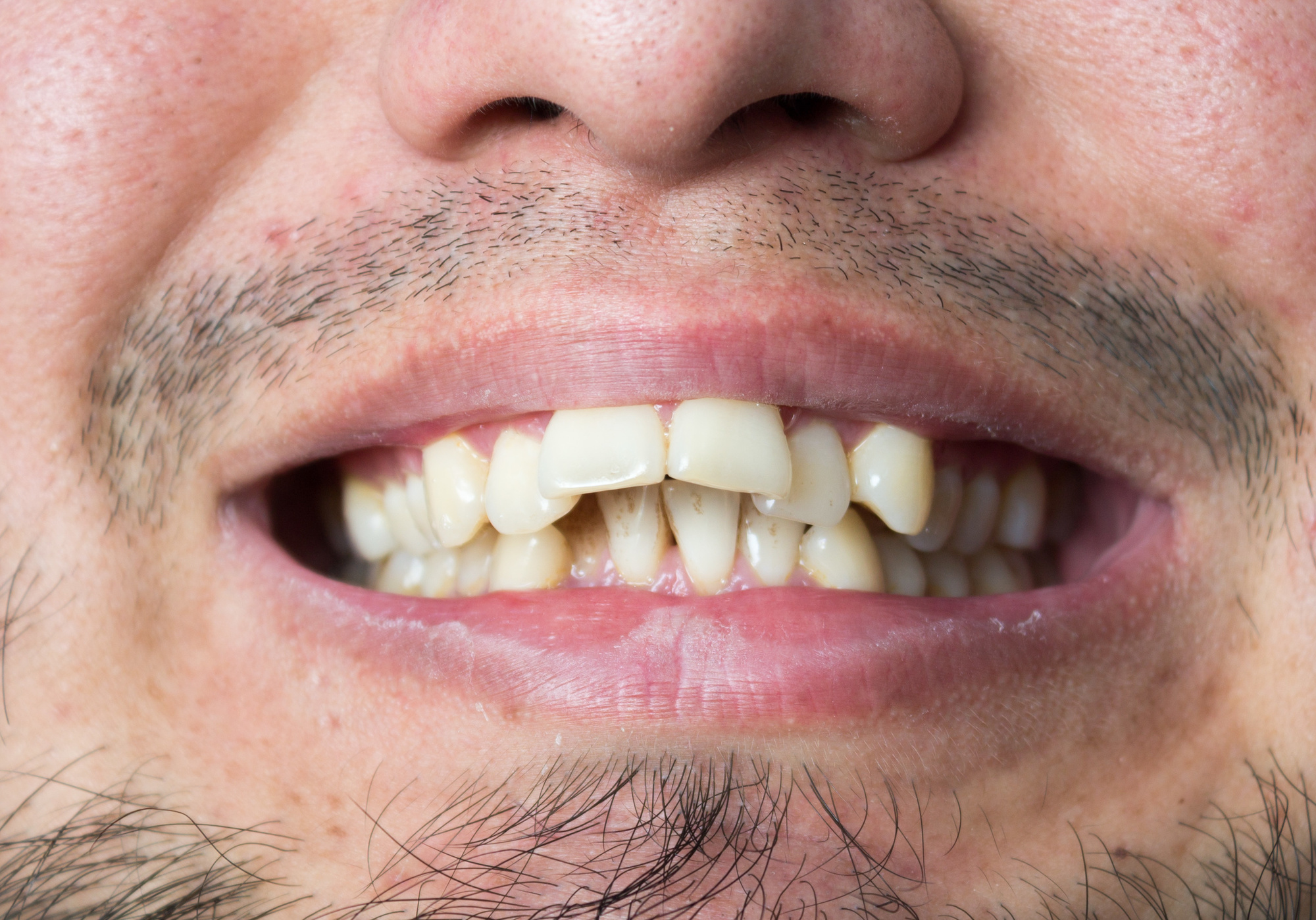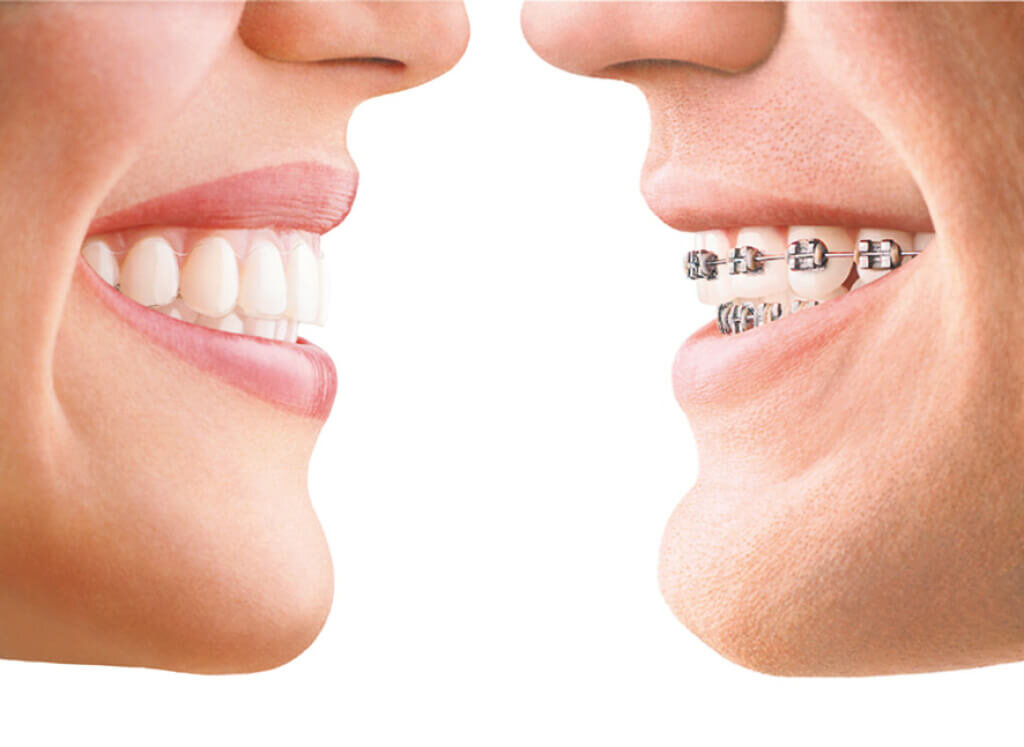Keeping Oral Health While Using Invisalign: Tips for a Smooth Experience
Keeping Oral Health While Using Invisalign: Tips for a Smooth Experience
Blog Article
Invisalign vs. Standard Braces: Which Alternative Is Right for You?
When taking into consideration orthodontic treatment, the option in between Invisalign and traditional braces offers several essential variables that warrant careful examination. Invisalign offers a discreet choice with detachable aligners, while conventional braces provide a more visible yet efficient option for extreme misalignment.
Introduction of Therapy Alternatives

In comparison, traditional dental braces are composed of metal braces and cords that are bonded to the teeth. This approach applies constant stress in time to accomplish positioning. While effective for complicated orthodontic concerns, conventional braces call for normal gos to for changes and can pose challenges in preserving dental health because of the trouble of cleansing around brackets and cables.
Both choices have their qualities, and the choice frequently rests on certain dental conditions, way of life preferences, and individual conformity. Eventually, speaking with an orthodontic specialist is critical for identifying the most suitable treatment plan customized to private requirements. Recognizing the subtleties of each choice can substantially affect the total success of orthodontic therapy.
Aesthetic Considerations
A considerable factor affecting the option in between Invisalign and typical braces is the visual charm each treatment supplies. Invisalign aligners are crafted from clear plastic, making them essentially invisible when put on.
In contrast, typical dental braces consist of steel braces and wires, which can be extra obvious. While developments in orthodontic modern technology have brought about the development of smaller sized braces and colored elastics, typical braces still preserve an even more conspicuous profile. For some people, the visibility of braces might deter them from seeking needed therapy.
Eventually, the choice between Invisalign and conventional braces might rest on personal preferences regarding appearances. People who prioritize discernment frequently lean toward Invisalign, while those who are less concerned regarding presence might opt for standard dental braces. Understanding the aesthetic implications of each option is important for making an informed decision that lines up with one's way of life and preferences.
Comfort and Convenience

In regards to convenience, Invisalign aligners are removable, allowing people to appreciate their favored foods without constraint and keep optimum dental health. Brushing and flossing are streamlined, as the aligners can be gotten throughout these regimens, whereas traditional braces need careful maneuvering around wires and braces.
In comparison, standard braces demand routine modifications, making them less hassle-free for those with busy timetables. Generally, the comfort and convenience of Invisalign make it an attractive option for several people seeking orthodontic therapy.
Treatment Period and Performance
While both Invisalign and standard braces are reliable in dealing read the article with oral misalignments, the period of treatment can vary dramatically between both options. Normally, Invisalign treatment can take anywhere from 12 to 18 months, depending on the complexity of the situation. The clear aligners work by progressively moving teeth into their preferred placements, and normal follow-ups with an orthodontist aid make certain progress continues to be on the right track.
On the other navigate to this website hand, typical braces typically require a longer dedication, typically ranging from 18 months to 3 years. This results from their set nature and making use of wires and brackets, which can be much more reliable for extreme imbalances and complex cases (Invisalign). The therapy effectiveness of conventional braces is well-documented, as they allow for accurate changes and greater control over tooth motion
Inevitably, the selection in between Invisalign and typical dental braces might depend upon both the awaited treatment duration and the particular dental issues handy. Consulting with an orthodontist is crucial, as they can offer tailored suggestions based on individual needs, guaranteeing the chosen method straightens with desired durations and results.
Expense Comparison and Insurance Options
Cost plays a substantial function in the decision-making process for people taking into consideration orthodontic therapy, whether going with Invisalign or standard braces. Usually, the price of Invisalign varieties from $3,000 to $8,000, while traditional dental braces normally set you back in between $2,000 and $6,000. Elements influencing these expenses include the intricacy of the instance, the period of treatment, and geographical place.
Lots of dental insurance policy strategies supply partial insurance coverage for orthodontic therapies, but the specifics can vary widely. Normally, standard dental braces might be more frequently covered by insurance policy strategies compared to Invisalign, which some insurance firms classify as a cosmetic procedure.
In addition, a number of orthodontic techniques supply flexible payment strategies, making both therapy options much more obtainable. Patients ought to ask regarding possible financing options and discounts for upfront payments. Assessing the total cost, consisting of insurance policy advantages and layaway plan, is crucial for making an educated choice that aligns with both visual choices and spending plan factors to consider.

Verdict
In recap, the selection between Invisalign and typical braces depends upon several factors, consisting of visual preferences, convenience, treatment period, and great post to read cost. Invisalign uses a discreet, detachable alternative that helps with dental health and dietary flexibility, while typical braces may be preferable for complex oral concerns and typically come with a lower cost point. Ultimately, consultation with an orthodontist is necessary to analyze individual scenarios and determine the most proper therapy option for accomplishing optimal dental placement.
When thinking about orthodontic therapy, the selection between Invisalign and traditional braces presents numerous crucial variables that warrant careful assessment.Comparing Invisalign and standard braces discloses distinctive therapy alternatives for orthodontic correction.While both Invisalign and conventional braces are effective in dealing with oral imbalances, the duration of therapy can differ considerably between the two alternatives.Price plays a considerable function in the decision-making procedure for individuals thinking about orthodontic treatment, whether opting for Invisalign or conventional braces.In summary, the choice between Invisalign and traditional braces pivots on numerous variables, consisting of aesthetic choices, convenience, treatment duration, and price.
Report this page